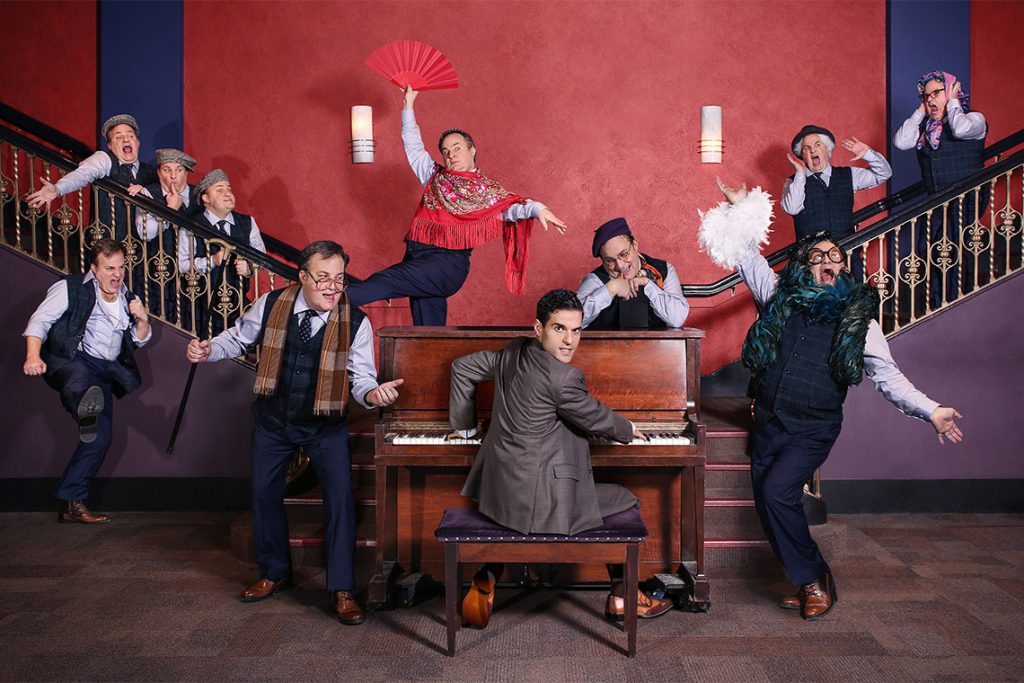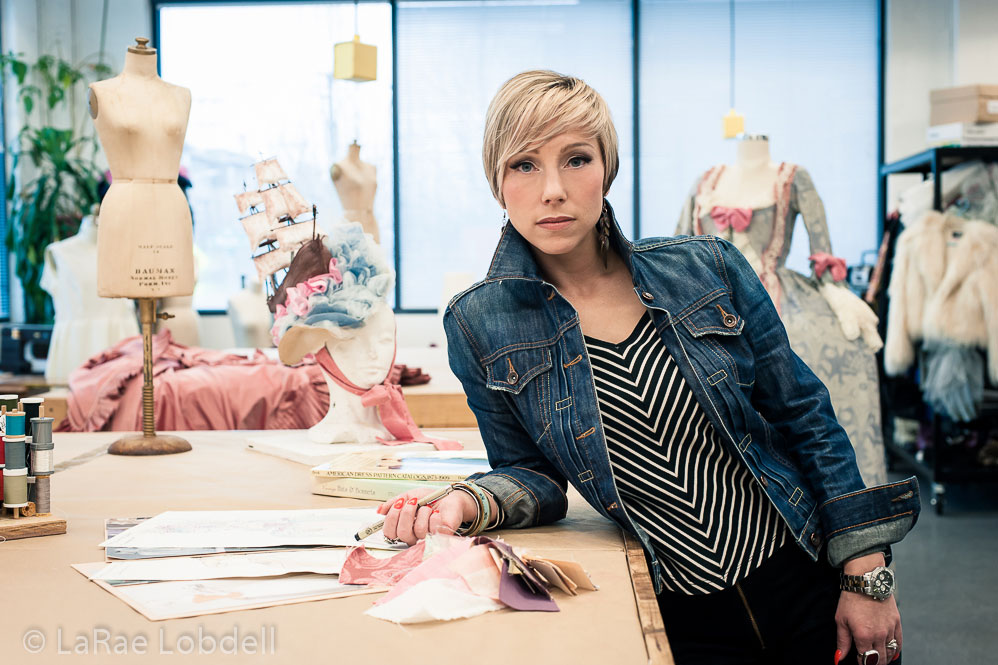For Harmony Arnold, the costume designer for the production Murder for Two, currently being staged at ACT Theatre, in collaboration with the 5th Avenue Theatre, it’s about exactly that—harmony. “My job is to work with an actor to achieve character.” It’s that character development she appreciates most in costuming actors. “I love the collaborative process.”
Arnold knows something about collaboration. She just recently worked with the 5th Avenue Theatre in their production of The Man of La Mancha. She’s done work with Seattle Repertory Theatre (Buyer & Cellar, Venus in Fur, Bo-Nita), INTIMAN Theatre Festival (Lysistra), Village Theatre (Snapshots), an ACT Theatre/5th Avenue Theatre collaboration (Jacques Brel is Alive and Well and Living in Paris), and other theatre companies. Arnold has also recently done designs for film (Waxie Moon in Fallen Jewel, Perfect 10) and has done much more, including advertising and commercial work. She also is an Associate Professor, Performing Arts & Art Leadership (Theatre, Costume) at Seattle University.
“It is a team sport,” she says sitting in ACT’s lobby, taking a break for a few minutes from the production of Murder for Two to talk about the show and her process.

The team of actors in Murder for Two is a small one—two actors. One plays a crime investigator—Chris DiStefano. One—Richard Gray—plays ten different suspects and, together, the pair make up the entire orchestra. This is all done in a fevered 90 minutes with no intermission. How do you costume someone who doesn’t have time for a costume change?
The show is very busy and fast-paced and it’s a challenge, to be sure, for someone like Arnold. “The whole show could be done with a piano and a hat.” But it’s not that simple. It’s a challenge to create characters in such a whirlwind environment and, together with DiStefano and, particularly, Gray, it’s an opportunity to work together to create characters through movement, voice, and clothes.
It all starts, of course, with a deep read of the script. the actors have their ideas about costuming as they read the script, just as Arnold does. They meet. They discuss. They collaborate.
With a creative team that includes director Daniel Knechtges, scenic design by Carey Wong, lighting design by Rich Paulsen and sound design by Christopher Walker, the feel and, specific to Arnold’s job, the look is sussed out. They begin to build a structure based on the ideas garnered from those meetings.
“The production meetings,” Arnold enthuses, “including laughing, brainstorming and collaboration. If you bring a good care-free attitude to them, a lot can get done.”
What Arnold has to get done—to harmonize an actor’s wants and needs on stage with a director’s vision. Add to that, the visions of the other creative staff.
For Murder for Two, the inspirations that immediately came to mind included the Victorian era and Edward Gorey. Add to that small colorful flourishes. The fashions of the 1970s harken back to the Victorian era, Arnold noted, but with more color—the textures and patterns. Arnold began working up this idea, looking deeper in 1970s culture—All in the Family episodes, Phyllis Diller, Elton John, the boardgame Clue, Velma from the Scooby-Doo cartoons. These ideas showed up on Arnold’s character boards.
Even though there’s no time for Gray on stage to change costumes, Arnold created a character board for each of them to inform not only the actor, but the show as a whole. By fleshing out the characters, one helps flesh out the show. For DiStefano it was somewhat straight forward. A simple, drab 1970s-looking detective outfit. Think Columbo. For Gray, there were many boards and for both genders (Chevy Chase, Tom Selleck, Barbara Streisand). For one character Gray plays, Dahlia, Arnold finally got to go all-out on a costume. She describes it this way—“If Elton John and RuPaul conceived a child while watching Priscilla, Queen of the Desert, you have Dahlia.”
Of course, in the making of these costumes, it’s not Arnold working alone. There are cobblers, drapers, shoppers and craft artisans constructing the visions the creative team have. And, to keep in mind, you can’t go to a vintage store and just buy an old brown suit. You need multiples of each costume. Actors sweat. Actors do dance numbers on their knees. Actors move around the stage. Actors play the piano vigorously. There are several identical costumes per show that can, and will, be used. Actors are at work in these costumes and the costumes have to work.
Luckily, working with both in mind is Harmony Arnold.
